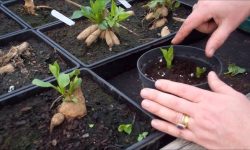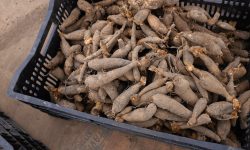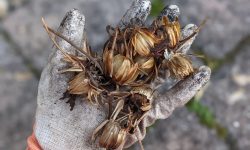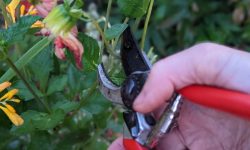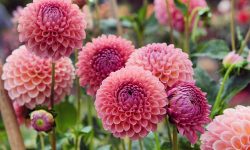Columbine flowers, scientifically known as Aquilegia, are beloved for their delicate, nodding blooms and lacy foliage that bring a romantic, woodland feel to any garden. These perennial wildflowers are native to North America and adapt well to various growing zones, making them an ideal choice for gardeners seeking beauty with minimal maintenance.
The charm of columbine lies not just in its aesthetics but in its ability to thrive in shaded areas, attract hummingbirds and pollinators, and reseed freely for years of enjoyment. Whether you’re new to growing from seed or an experienced gardener looking to expand your spring flower palette, learning how and when to plant columbine seeds can help you ensure a spectacular floral display year after year.
Understanding Columbine Seed Biology
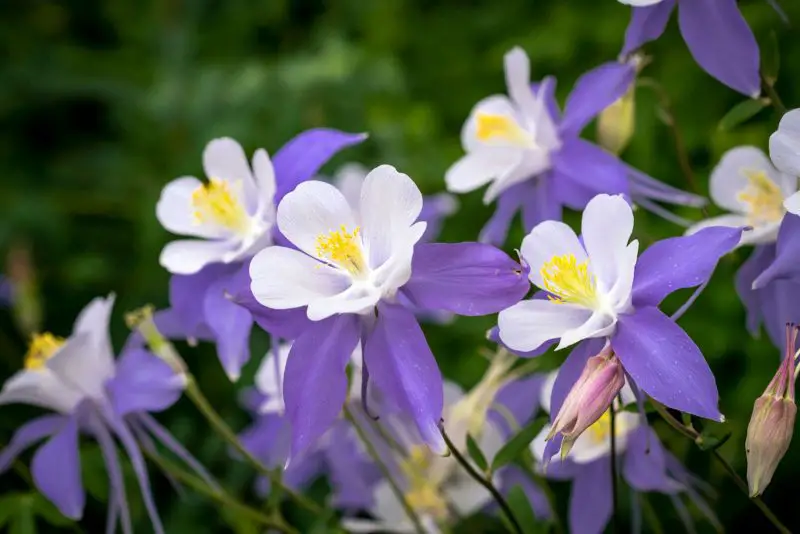
Columbine seeds possess a physiological dormancy that requires exposure to prolonged cold, a trait evolved to synchronize germination with favorable spring conditions. This dormancy is broken through a process called cold stratification, during which internal hormonal balances shift—specifically, a decrease in abscisic acid and an increase in gibberellic acid—to initiate embryo growth.
The seed coat is relatively thin, allowing for rapid moisture uptake once dormancy is broken. However, light is also a critical germination factor; columbine seeds are positively photoblastic, meaning they need light exposure to trigger enzymatic activity and cell division. Germination typically occurs within three to four weeks under proper conditions, but variability in seed viability and stratification technique can influence timing and success rates.
Understanding these biological needs is essential for accurate timing, whether sowing outdoors in fall or controlling the environment during indoor propagation.
Choosing the Right Columbine Variety for Your Climate
Selecting the most suitable columbine variety for your region’s climate not only ensures healthier plants and better blooms but also improves longevity and self-seeding performance. Different species and hybrids of Aquilegia thrive under varying environmental conditions, from cool alpine zones to hot and humid lowlands. Here’s a regional breakdown with expert suggestions:
Northeastern United States (Cold Winters, Humid Summers)
For gardeners in states like New York, Vermont, Pennsylvania, and Massachusetts, cold-hardy columbines are essential. These areas experience snowy winters and moist springs, making Aquilegia canadensis a top choice. This Eastern red columbine is native to the region, tolerant of partial shade, and naturally adapted to the local climate. Its tolerance for cold temperatures and wet spring soils makes it reliable in woodland gardens and borders.
Also suitable is Aquilegia vulgaris, particularly cultivars like ‘Nora Barlow’ or ‘Black Barlow’. These double-flowered types perform well in rich soils and moderate summer heat, especially in part shade.
Southeastern United States (Hot Summers, Mild Winters)
In warmer zones such as Georgia, Florida Panhandle, Alabama, and the Carolinas, heat and humidity resistance are key. While columbines generally prefer cooler climates, Aquilegia canadensis also thrives here when grown in part shade and mulched well to retain moisture. Its ability to tolerate some drought and heat makes it more suitable than European hybrids.
For coastal or sandy soils, consider planting columbine in raised beds or containers with excellent drainage. Avoid large-flowered hybrids, which may struggle in prolonged summer heat.
Midwestern United States (Cold Winters, Hot Summers)
This region—covering Illinois, Ohio, Michigan, and parts of the Plains—experiences temperature extremes. Gardeners here benefit from growing Aquilegia chrysantha (Golden Columbine), which can tolerate summer heat better than most species, especially when watered deeply and regularly.
Another excellent option is Aquilegia canadensis, which adapts well to both woodland and prairie edge conditions. Cultivars from the Songbird Series, such as ‘Songbird Blue’ or ‘Songbird White’, are bred for hybrid vigor and broader temperature tolerance, ideal for the upper Midwest.
Southwestern United States (Arid, High-Heat Summers)
In states like Arizona, New Mexico, Nevada, and Southern California, water conservation is critical, and sun exposure is more intense. The best-performing species here is Aquilegia chrysantha (Yellow Columbine), particularly native selections like A. chrysantha var. hinckleyana, known for drought tolerance and upright, heat-resistant foliage. These columbines are naturally adapted to canyon and desert-edge ecosystems and thrive with minimal irrigation once established.
Provide afternoon shade or filtered sun during the hottest part of the day, and plant in gravelly, well-drained soil to reduce root rot.
Pacific Northwest (Mild, Moist Climate)
Washington, Oregon, and Northern California offer cool summers and abundant rainfall, ideal for many columbine varieties. Here, Aquilegia formosa (Western Columbine) is a standout native species that thrives in damp woodlands and near streams. It naturalizes easily in partially shaded gardens and tolerates wet spring soils.
European hybrids such as Aquilegia vulgaris also perform well in the Pacific Northwest due to the mild climate. Compact cultivars from the Winky Series resist fungal issues and remain tidy in high-humidity gardens.
Rocky Mountain Region (Cool Summers, Short Growing Season)
Montana, Colorado, Utah, and Wyoming boast high elevation, intense sun, and short summers. Aquilegia coerulea, the Colorado blue columbine, is perfectly suited for this environment. With its tolerance of alpine conditions, quick bloom cycle, and resistance to cold snaps, it is an iconic choice for mountain landscapes.
This species thrives in full sun at high altitudes and will self-seed freely in rocky soils. To maximize performance, sow directly in fall or cold-stratify before spring planting.
Southern California and Coastal Southwest (Mild Winters, Hot Summers)
In urban and coastal areas with Mediterranean climates, Aquilegia eximia (Serpentine Columbine) is a rare native option tolerant of dry summers and poor soils. Also, interspecific hybrids bred for drought tolerance, like the Kirigami Series, offer large blooms and consistent performance in containers and water-wise gardens.
Mulch heavily and irrigate during extended dry spells, especially during bloom season, to support flower production and plant vigor.
When to Plant Columbine Seeds for Best Results
Columbine (Aquilegia) seeds require precise timing to ensure optimal germination and strong seedling development. The best planting window depends on whether you plan to sow seeds directly outdoors or start them indoors under controlled conditions. Each method offers different advantages based on climate, garden goals, and seasonal constraints.
Fall Planting: Mimicking Nature’s Cycle
In many temperate climates across the United States, fall is considered the ideal time to sow columbine seeds directly into the garden. Native columbine species drop seeds in late summer and early fall, which then lie dormant through winter, naturally stratifying in cold soil. Mimicking this process by sowing in September or October allows nature to handle the cold stratification required for germination.
By the time spring temperatures rise, seeds that have overwintered outdoors break dormancy and germinate with stronger root systems, giving young plants a full growing season to establish before their first bloom cycle the following year.
Fall planting works especially well in USDA Zones 4 through 7, where winter is cold enough to support the stratification process without risking freeze damage to very young seedlings.
Spring Planting: Controlled and Flexible
For gardeners who prefer more control or live in milder climates where winters may not be reliably cold (Zones 8 to 10), starting columbine seeds indoors in late winter to early spring is the best approach. Seeds should be cold stratified manually in a refrigerator for 3 to 4 weeks before sowing.
Begin stratification in January or February, then sow in trays by March. Once the danger of frost has passed—typically April to early May—harden off the seedlings and transplant them into the garden. This method ensures consistent germination and allows gardeners to monitor early growth in a controlled environment.
Spring planting also suits gardeners aiming to establish specific hybrid varieties or wanting earlier blooms in the second year. Keep in mind that columbine grown from seed rarely flowers in its first year unless started exceptionally early and given ideal conditions.
Direct Sowing in Early Spring: A Practical Alternative
In climates where fall planting isn’t possible or preferred, direct sowing in early spring—once soil temperatures reach around 50°F (10°C)—is also effective. This is often done from late March through April in many parts of the Midwest and Northeast. Seeds may still require natural stratification, so germination may be slower and more staggered than indoor starts.
To improve success, some gardeners pre-chill seeds for 3 to 4 weeks in moist paper towels inside a sealed bag in the fridge, then plant them directly once soil conditions allow.
Timing for Bloom Expectations
Regardless of the planting season, it’s important to note that columbine plants started from seed typically take 12 to 14 months to flower. That means seeds sown in fall or spring will usually not produce blooms until the following growing season. The key benefit of fall planting is that seedlings emerge with the full support of spring moisture and temperatures, giving them a natural head start.
By understanding seasonal planting strategies and the biology of columbine germination, you can optimize your timeline for stronger plants and more vibrant, long-lasting blooms. Whether you choose fall or spring sowing, giving seeds the cold period they need is essential for success.
How to Cold Stratify Columbine Seeds
Columbine seeds have a natural dormancy mechanism that requires exposure to cold, moist conditions to trigger germination. This process, known as cold stratification, replicates the natural winter conditions seeds would experience in the wild.
Indoor Stratification Method
To cold stratify columbine seeds indoors, begin by placing the seeds in a moist medium like damp paper towel, peat moss, or vermiculite. Seal them in a plastic bag or airtight container and store them in the refrigerator at temperatures between 35°F and 40°F (1.5°C to 4.5°C). Keep them in cold storage for at least 3 to 4 weeks. Check periodically to ensure the medium remains moist but not soggy.
After stratification, sow the seeds immediately in seed-starting trays or small pots under grow lights or near a bright window. Maintain a consistent temperature of 65°F to 70°F (18°C to 21°C) to encourage germination.
Outdoor Stratification (Natural Method)
For a more hands-off approach, sow columbine seeds outdoors in fall. As winter sets in, the natural cold and moisture will provide the stratification needed. Come spring, the seeds will begin to germinate as temperatures rise. This method is ideal for gardeners in colder zones where winter temperatures remain consistently below 40°F (4°C) for several weeks.
Cold stratification is a crucial step in ensuring healthy, uniform germination. Skipping it can result in delayed sprouting or poor seedling development.
Preparing the Soil for Planting Columbine
Successful columbine growth begins with creating optimal soil conditions. These perennial wildflowers thrive in rich, well-drained environments where their roots can access nutrients without becoming waterlogged. Soil preparation is especially critical for seed germination, root establishment, and long-term plant health.
Soil Type and Structure Requirements
Columbine prefers loose, well-draining loamy soil that retains some moisture but doesn’t become compacted or soggy. The ideal soil texture should be a balance of sand, silt, and clay. In overly clay-heavy soils, root development can suffer from poor aeration and excess moisture, leading to rot. In contrast, sandy soil may drain too quickly, depriving roots of consistent hydration during early establishment.
To improve structure in clay-based soils, incorporate coarse sand, pine bark fines, or perlite to improve porosity. In sandy soils, add organic matter such as compost or well-rotted leaf mold to increase moisture retention and provide a better nutrient base.
Ideal pH Range and Nutrient Balance
Columbines prefer slightly acidic to neutral soils with a pH range of 6.0 to 7.0. Before planting, it’s beneficial to test your soil using a soil pH kit or send a sample to a local extension service for analysis. If the soil is too acidic (pH below 6.0), you can raise the pH by incorporating garden lime. If it is too alkaline (above 7.0), amend with elemental sulfur or peat moss.
Columbine is not a heavy feeder, but it performs best in soil that is moderately fertile. Excess nitrogen can encourage foliage growth at the expense of flowers. Aim for a balanced soil with adequate phosphorus and potassium levels to support bloom production and root health. If needed, mix a small amount of bone meal or rock phosphate into the soil prior to planting.
Pre-Planting Amendments for Optimal Performance
Amending the soil with organic matter prior to planting is essential, especially when sowing seeds directly. Work in 2 to 3 inches of compost, aged manure, or worm castings into the top 6 to 8 inches of soil. This not only enhances the soil’s structure and fertility but also supports beneficial microbial activity that encourages seedling vigor.
For heavy soils or locations with poor drainage, consider creating slightly raised beds or mounded rows to elevate the root zone above water accumulation. This practice improves both drainage and aeration while promoting deeper root development.
Soil Preparation Timeline and Techniques
Prepare your soil at least one to two weeks before sowing columbine seeds or transplanting seedlings. This allows time for soil amendments to settle and moisture levels to stabilize. Rake the soil smooth and remove any large clumps, stones, or weeds that may compete with germinating seeds.
For direct seeding, lightly tamp the surface after broadcasting seeds to ensure good seed-to-soil contact. Avoid compacting the soil too much, as columbine seeds need light exposure to germinate. If starting indoors, use a finely sieved seed-starting mix that is lightweight, sterile, and free-draining.
By giving proper attention to soil preparation, you set a solid foundation for strong germination, healthy roots, and a blooming, resilient columbine display that will flourish season after season.
How to Sow Columbine Seeds Outdoors
Sowing columbine seeds directly into the garden is a practical and rewarding method, especially for gardeners aiming to naturalize this perennial in borders, woodland edges, or wildflower plots. With the right timing and conditions, outdoor sowing can lead to strong, climate-acclimated seedlings.
Best Timing for Outdoor Sowing
The most effective time to sow columbine seeds outdoors is in late fall or early spring. Fall sowing mimics natural conditions, allowing the seeds to undergo cold stratification over winter, which improves germination rates in spring. If sowing in early spring, ensure the last frost has passed or use pre-stratified seeds to encourage prompt sprouting.
Site Preparation and Soil Surface
Select a location with partial shade to full sun depending on your climate, and ensure the soil is well-drained and enriched with organic matter. Rake the topsoil finely to create a crumbly seedbed. Remove weeds and debris, and lightly moisten the surface before sowing.
Sowing Technique
Columbine seeds should be sown on the surface of the soil without being covered, as they require light to germinate. Gently press the seeds into the soil using the back of a rake or your hand to improve contact. Keep the area consistently moist but not soggy during the germination phase, which typically takes two to four weeks.
Early Care After Germination
Once seedlings emerge, thin them to provide good airflow and reduce competition. Water moderately, and protect young plants from heavy rainfall or pests like slugs. With proper care, columbine seedlings will establish their rosettes and may begin flowering the following spring.
Starting Columbine Seeds Indoors
Growing columbine from seed indoors offers greater control over germination and early plant development, making it an ideal method for gardeners in colder regions or those aiming for earlier blooms.
When to Start Seeds Indoors
Begin the indoor process about 10 to 12 weeks before your region’s last expected frost. This early start gives seedlings time to develop strong roots before transplanting outdoors in spring.
Using Cold Stratification Indoors
Columbine seeds benefit from cold stratification to break dormancy. Place the seeds in a damp paper towel or mix them into moist seed-starting medium, then seal in a plastic bag and refrigerate for 3 to 4 weeks. This simulates winter conditions and significantly improves germination rates.
Sowing and Germination Conditions
After stratification, sow seeds on the surface of moist seed-starting mix in trays or small pots. Do not cover the seeds, as they need light to germinate. Maintain temperatures between 65°F and 70°F, and place the containers under grow lights or near a bright window. Seeds typically sprout within 2 to 4 weeks.
Caring for Seedlings Indoors
Once germinated, provide 12–14 hours of light daily and keep the soil evenly moist but not soggy. When seedlings produce two sets of true leaves, thin them out and gradually begin hardening them off outdoors two weeks before transplanting to the garden.
Caring for Young Columbine Seedlings
Once columbine seeds have germinated and seedlings have emerged, proper early care is crucial for establishing strong, healthy plants. The young seedlings are delicate and require consistent attention to environmental conditions and watering habits to prevent stress and disease.
Providing Optimal Light and Temperature
Columbine seedlings thrive in cool, bright conditions. If grown indoors, place them under grow lights for 12 to 14 hours per day or near a bright south-facing window. Avoid exposing them to direct, hot sunlight during this early stage, as it may cause wilting or leaf burn. Maintain ambient temperatures between 60°F and 70°F to support steady growth without encouraging legginess.
Managing Watering and Moisture Levels
Consistent moisture is key during the seedling stage, but overwatering can quickly lead to fungal issues like damping-off. Water gently when the top layer of the soil begins to dry out, ensuring the root zone remains evenly moist but never saturated. Bottom watering is often recommended to prevent disturbing the fragile stems and to reduce surface humidity that encourages mold growth.
Monitoring Air Circulation and Humidity
Good air circulation helps reduce the risk of fungal diseases. Avoid placing seedlings in enclosed areas without ventilation. If using a humidity dome or plastic cover during germination, remove it gradually once seedlings emerge to prevent excess moisture buildup. A small fan on low speed nearby can help strengthen stems and prevent disease.
Fertilizing for Steady Early Growth
Young columbine seedlings benefit from light feeding once they develop their first set of true leaves. Use a diluted, balanced liquid fertilizer—at about one-quarter strength—every two weeks to promote healthy root and leaf development. Avoid high-nitrogen fertilizers at this stage, as they may lead to rapid, weak growth rather than strong, compact seedlings.
Preparing for Transplanting
As the seedlings continue to grow and develop a few sets of true leaves, begin acclimating them to outdoor conditions through a hardening-off process. Gradually expose them to outdoor light, temperature shifts, and wind over 7 to 10 days before transplanting them into the garden or larger pots. This gradual transition reduces transplant shock and helps the seedlings adjust more easily to life outside.

